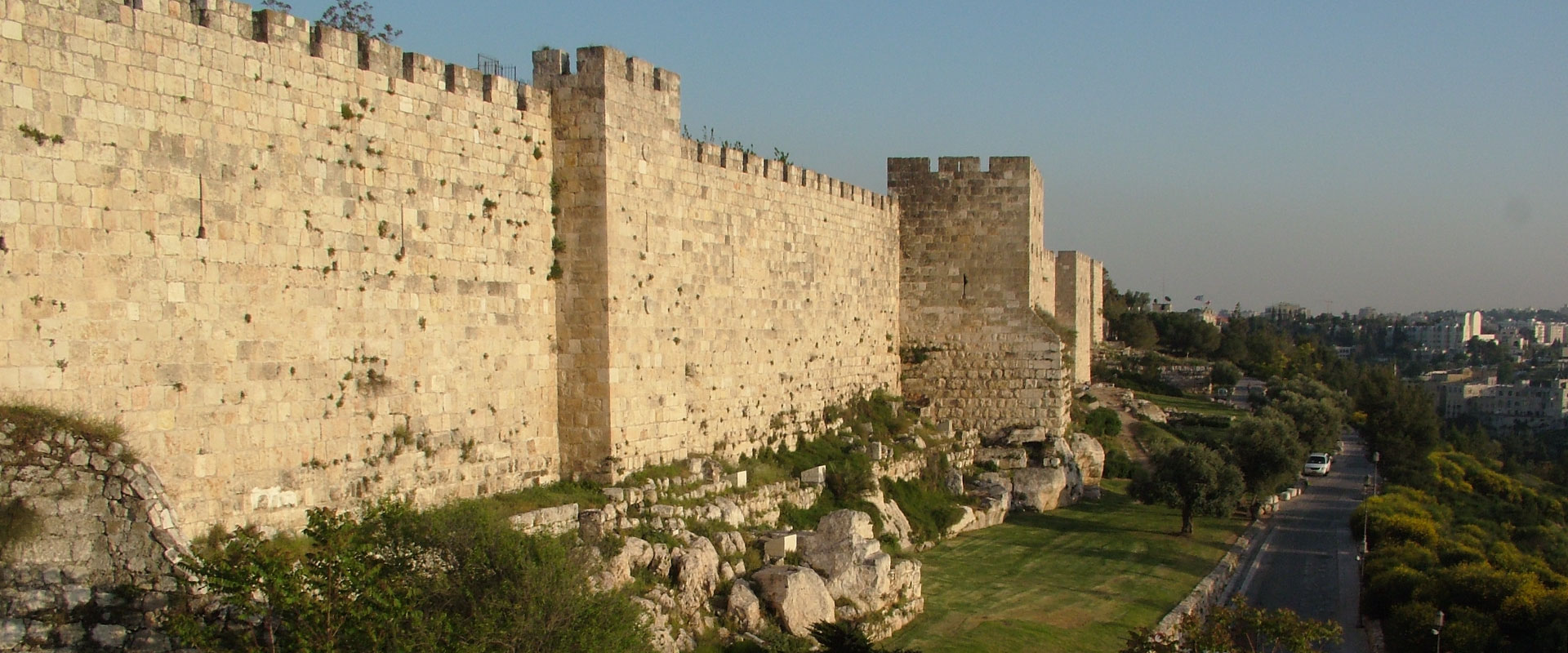The Dormition Abbey is one most important holy sites in the Holy Land. It origin is dated from a ancient Byzantine basilica Hagia Sion was built under John II, the Bishop of Jerusalem in the early 5th century.
The church appears also in the 6th-century mosaic Madaba Map in Jordan. The old basilica was destroyed in the 614 during the siege of Jerusalem by Sasanian king Khosrau II. Its foundations were recovered in 1899 when architect and buildings manager of the Diocese of Cologne, Heinrich Renard, investigated the site.
“Beautiful in elevation, is the joy of all the earth, Mount Zion, in the far north, the city of the great King.”
Let Mount Zion be glad,
let the towns of Judah rejoice
because of your judgments.
Traditional Mount Zion. Mount Zion is the hill on Jerusalem’s western ridge and is dominated by the Dormition Abbey church and bell tower.
Traditional Mount Zion. Mount Zion is the hill on Jerusalem’s western ridge and is dominated by the Dormition Abbey church and bell tower.
This, together with the ritual significance of the spring of Gihon at the foot of Mount Zion (cf. Gen 2:13; 1 Kings 1:33, 38, 45; 2 Chron 32:30; 33:14), inspires the river imagery of the Psalms (Ps 46:4; 74:13–15) that is associated with Zion and temple. It is this river imagery that once again erupts in Ezekiel’s vision of the eschatological …
“Adam,” Dictionary of Biblical Imagery, 11.
Remember your congregation, which you acquired long ago, which you redeemed to be the tribe of your heritage. Remember Mount Zion, where you came to dwell.
Psalms 74:2 NRSV


Zion zı̄′on (צִיּוֹן; Σιών):
1. MEANING OF THE WORD
A name applied to Jerusalem, or to certain parts of it, at least since the time of David. Nothing certain is known of the meaning. Gesenius and others have derived it from a Hebrew root צָהָה, “to be dry”; Delitzsch from צִוָּה, “to set up” and Wetzstein from צִין, “to protect.” Gesenius finds a more hopeful suggestion in the Arabic equivalent ṣihw, the Arabic ṣahwat signifying “ridge of a mountain” or “citadel,” which at any rate suitably applies to what we know to have been the original Zion (compare Smith, HGHL, under the word).
Considerable confusion has been caused in the past by the want of clear understanding regarding the different sites which have respectively been called “Zion” during the centuries. It will make matters clearer if we take the application of the name: in David’s time; in the early Prophets, etc.; in late poetical writings and in the Apocrypha; and in Christian times.
“Zion,” ISBE, paragraph 61397.
“Then the LORD will create over the whole site of Mount Zion and over its places of assembly a cloud by day and smoke and the shining of a flaming fire by night. Indeed over all the glory there will be a canopy.”
(Isaiah 4:5 NRSV)
The Name “ZION” in Christians Times
Among the earlier Christian writers who mention “Zion,” Origen used it as equivalent to the Temple Hill, but in the 4th century writers commence to localize it up the southern part of the western hill. It was a period when Biblical topography was settled in a very arbitrary manner, without any scientific or critical examination of the evidence, and this tradition once established remained, like many such traditions, undisputed until very recent years. To W. F. Birch belongs much of the credit for the promulgation of the newer views which now receive the adherence of almost every living authority on the topography of Jerusalem.
“Zion,” ISBE, paragraph 61420.
“Then the moon will be abashed, and the sun ashamed; for the LORD of hosts will reign on Mount Zion and in Jerusalem, and before his elders he will manifest his glory.”
Isaiah 24:23 NRSV
Today, important places for christians are located there, Dormition Abbey, David’s Tomb, Upper Room, all these in the traditional place called Mount Zion.

Important Digs
The Spring House, Eli Shukron In 1995, Ronny Reich and Eli Shukron began to excavate near the Gihon Spring and forever changed our understanding of Ancient Jerusalem.
The Shiloah Pool and the Second Temple Road , in 2004, Reich and Shukron began an excavation in the southern part of the City of David, at the site of the Second Temple period Shiloah Pool.
Givati Parking Lot - In 2007, Doron Ben-Ami and Yana Tchekhanovets began a comprehensive excavation in the Givati Parking Lot, located west of the entrance to the City of David.
Eli Shukron Since 2007 and Reich have been excavating the main water drainage tunnel of the city of Jerusalem from the Second Temple period, inside the Tyropoeon Valley.







